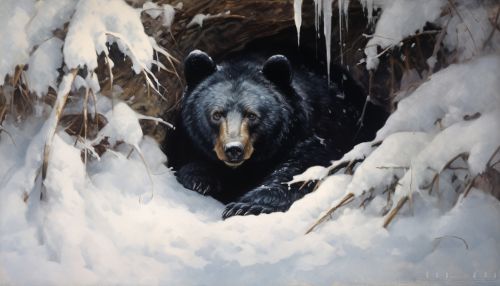The Science of Animal Hibernation and Torpor
Introduction
Hibernation and torpor are physiological adaptations that allow certain animals to survive in harsh environmental conditions. These states involve significant reductions in metabolic rate, body temperature, and other physiological functions, allowing animals to conserve energy during periods of cold temperatures or food scarcity. While hibernation is a long-term state that can last for several months, torpor is a short-term state that can last for a few hours to a few days. Both hibernation and torpor are complex processes that involve changes at the molecular, cellular, and organismal levels. This article will delve into the science behind these fascinating phenomena, exploring their physiological mechanisms, ecological implications, and evolutionary origins.
Physiological Mechanisms
Metabolic Suppression
The most striking feature of hibernation and torpor is the drastic reduction in metabolic rate. In some species, metabolic rate can drop to just 2% of the normal rate. This is achieved through a variety of mechanisms, including reductions in heart rate, respiratory rate, and body temperature. For example, the heart rate of a hibernating ground squirrel can drop from 200 beats per minute to just 5 beats per minute. Similarly, the body temperature of a hibernating black bear can drop from 37°C to 30°C.


Neurological Changes
Hibernation and torpor also involve significant changes in brain activity. During these states, neural activity is greatly reduced, and certain areas of the brain may even enter a state of neuronal silence. However, despite this reduction in activity, the brain remains responsive to external stimuli, allowing the animal to awaken if necessary. This is a key distinction between hibernation/torpor and other states of reduced activity, such as sleep or coma.
Hormonal Regulation
The onset and termination of hibernation and torpor are regulated by a complex interplay of hormones. For instance, the hormone melatonin is known to play a key role in the onset of hibernation in many species. Other hormones, such as leptin and insulin, are involved in the regulation of energy metabolism during these states.
Ecological Implications
Hibernation and torpor have significant ecological implications. By allowing animals to survive periods of cold temperatures or food scarcity, these states can influence patterns of distribution, abundance, and diversity in animal communities. They can also have important implications for the dynamics of predator-prey interactions, as predators may need to switch to alternative prey when their primary prey species are hibernating.
Evolutionary Origins
The evolutionary origins of hibernation and torpor are a topic of ongoing research. It is generally believed that these states evolved in response to environmental pressures, such as cold temperatures or food scarcity. However, the specific pathways and mechanisms of this evolutionary process remain poorly understood.
